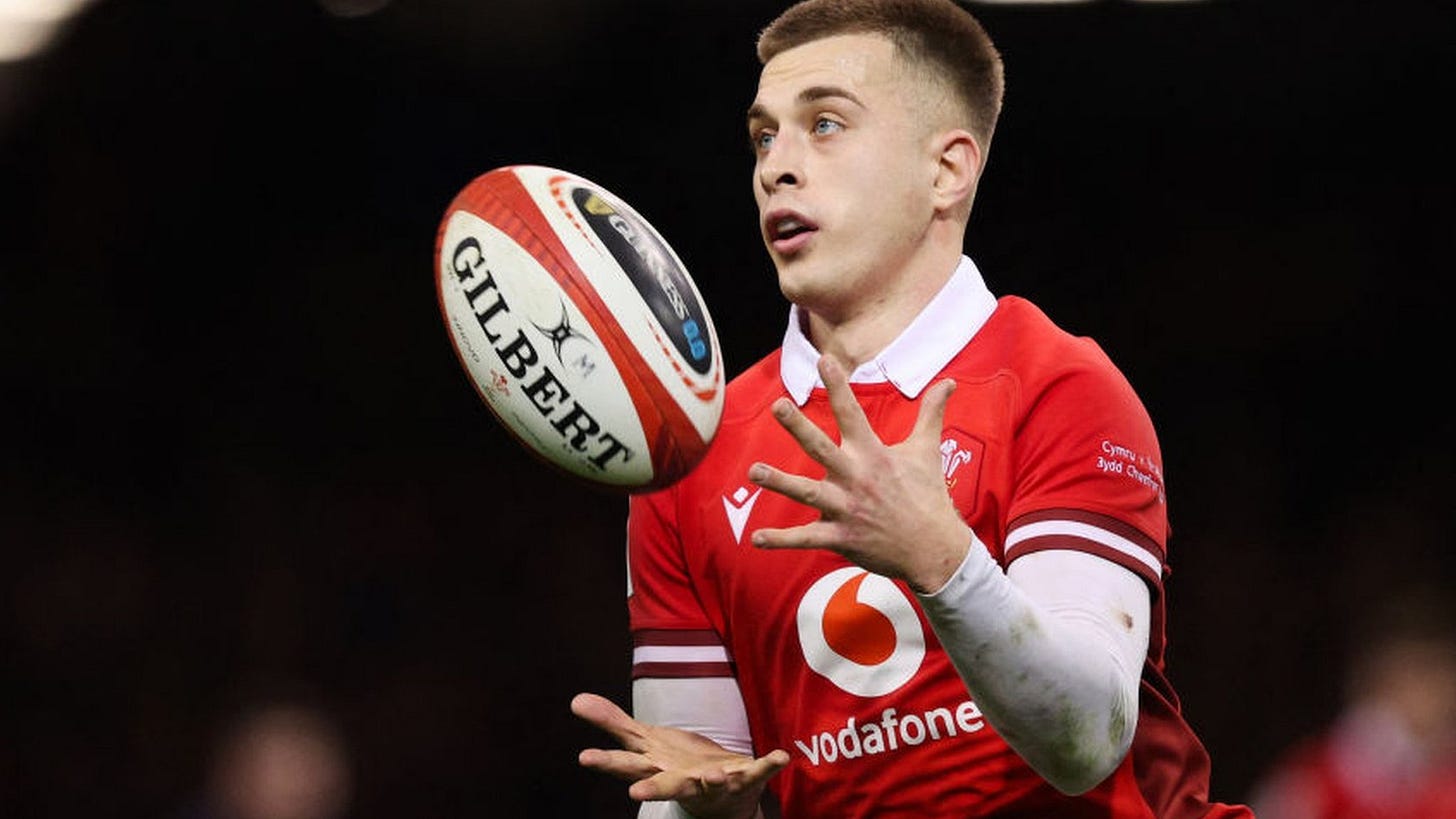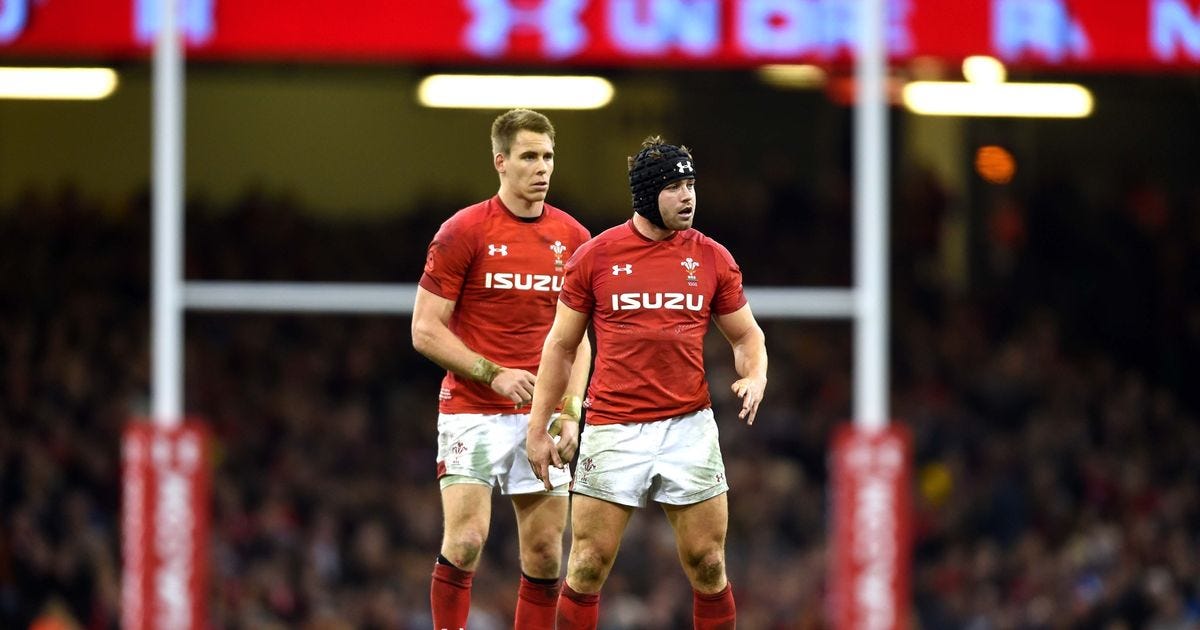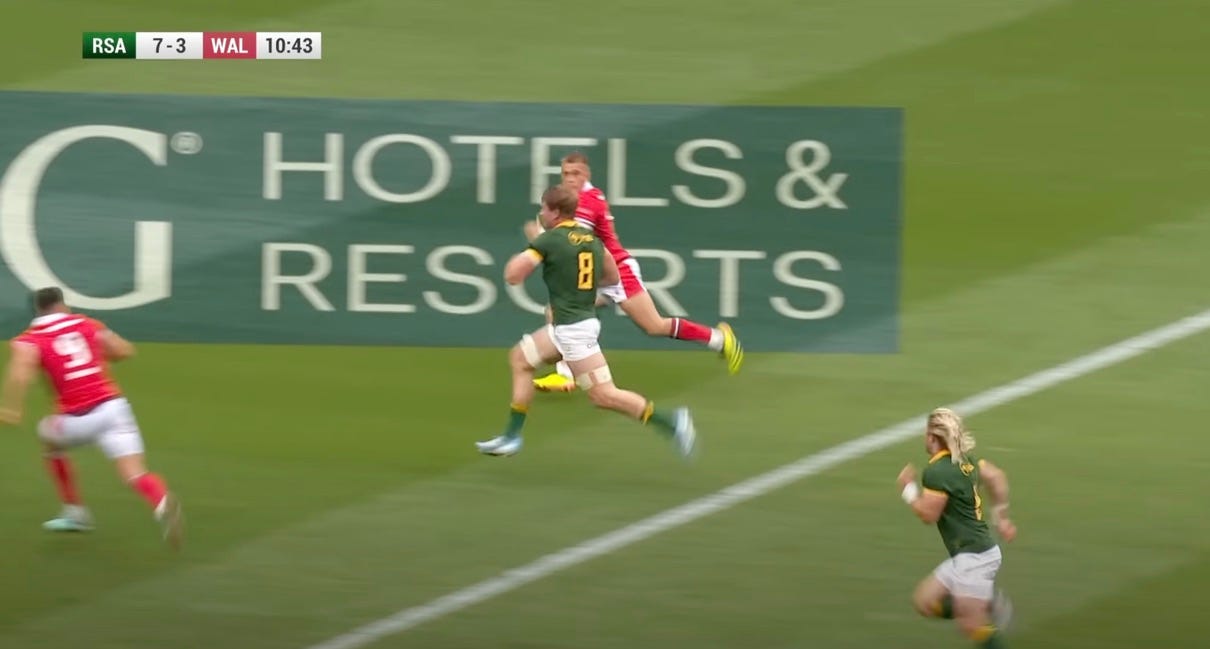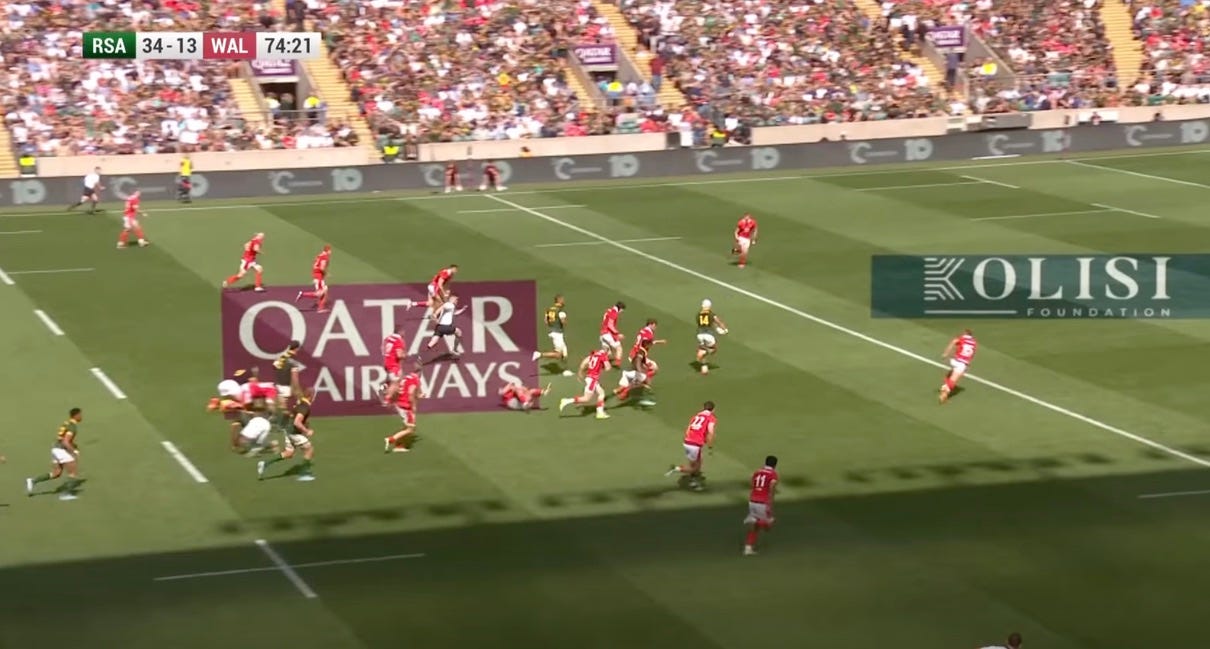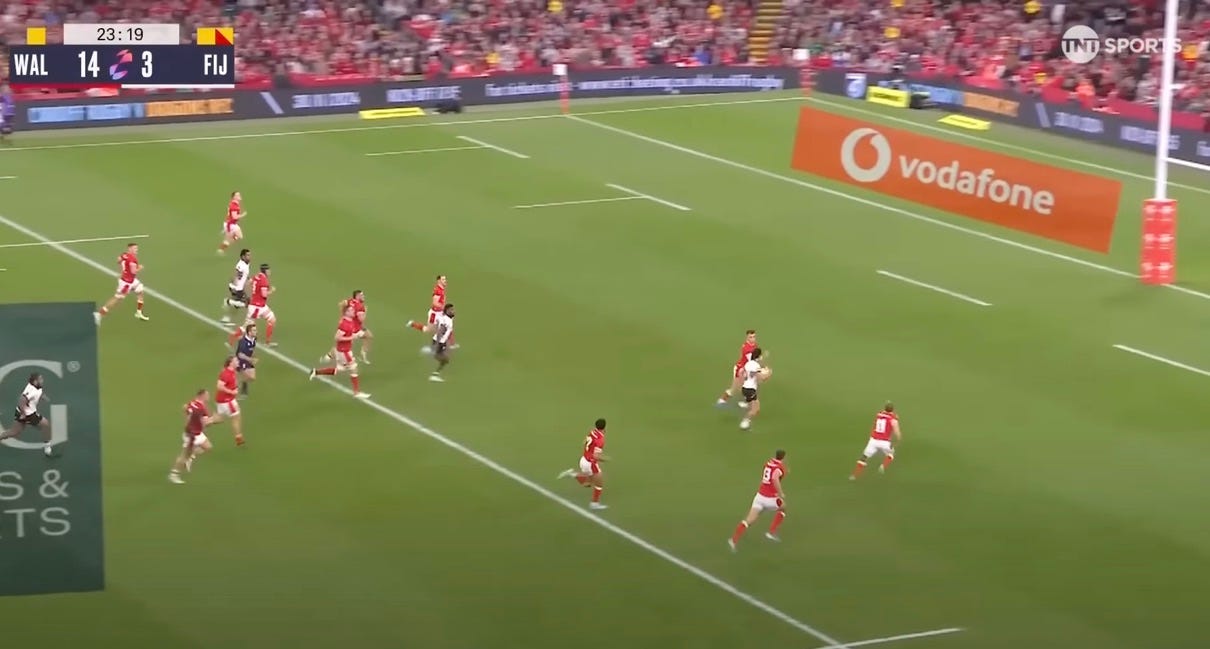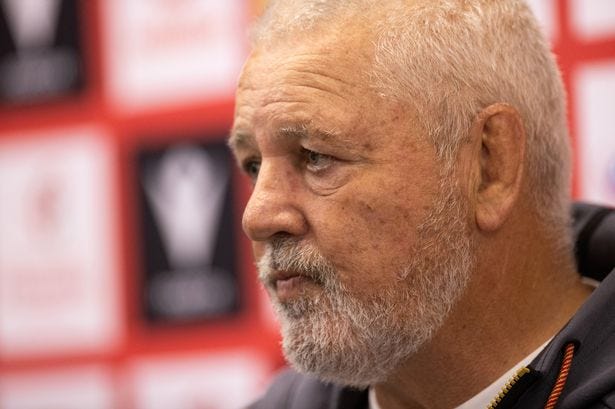Why Cam Winnett Was Axed By Wales: A Deep Dive
The fullback's absence from Wales' Six Nations squad was a shock, but perhaps it should have been predictable...
The announcement of a Wales Six Nations squad always heightens the emotions amongst fans. Everyone always believes that their favourite player from their region has been cruelly overlooked.
However, after Monday’s squad was released on social media, almost all Wales fans - and several fans from other nations - were in agreement. Cam Winnett’s exclusion was a shock.
So why did it happen? In this article we’ll search for clues amongst Winnett’s performances so far for both Wales and Cardiff, as well as the broader context of the Welsh fullback situation.
How We Got Here
For over a decade, the Wales number 15 jersey was shared by two men: Leigh Halfpenny and Liam Williams. Both multiple time British and Irish Lions tourists and both all time greats who provided Wales fans with many memories and many trophies.
But come 2024, suddenly neither was available. Halfpenny retired from test duty to fulfil his dream of playing Super Rugby and Williams was a victim of the regional salary cuts, forced to take up a contract in Japan which blocked his availability for the Six Nations.
And so, step forward Cam Winnett. The 21 year old was already on the radar of many thanks to his eye catching performances for Wales U20s. With William’s departure from Cardiff he graduated from the Rags team and took up his place in the regional starting lineup.
He was an instant hit. His calm and mistake free performances combined with incisive attacking play, arial dominance and assured kicking from hand belied his lack of experience and made him a fan favourite. By the time the Six Nations rolled around, he was the obvious choice to wear the red jersey.
Winnett wasted no time in making the Wales fullback jersey as his own, with his performance in Dublin against then number one ranked team in the world in particular earning plaudits. His tears at the anthem endeared him to the hearts of the nation before a ball was even kicked. He went on to play the full 80 in 7 of Wales’ first 8 games of 2024, missing only the first game against Australia as Williams made a one off return. This graph by TwoCents Rugby shows he had more game time in his position that any other Welsh player in 2024:
But, as we all know, none of those games ended in victory. Winnett is yet to taste test victory for Wales. For Wales’ final defeat of the year, against the Springboks, he didn’t taste a single minute as he was suddenly dropped from the match day 23.
This wasn’t a simple case of rotation or depth building. The player who stepped in was Blair Murray, someone in their first season of elite rugby who had never played a pro game at fullback before. For Warren Gatland to ditch a player whom he had committed to so heavily all year was something deeper.
He was sending a message.
The Case For… Or Against the Defence
There is now a possibility that cam Winnett’s last act on a rugby pitch for Wales will be the infamous Ikitau try.
Wales were destroyed by Australia in Cardiff last November in a miserable performance. Perhaps the lowest moment of the match was when Wallaby centre Len Ikitau, faced with a one on one with the Welsh fullback, walked over the try line untouched whilst openly laughing.
There is a good chance that no matter what he had done, Winnett would not have been able to stop the powerful Ikitau from scoring. But his failure to even lay a finger on him drew heavy criticism from viewers. It summed up a limp performance from the whole team.
Since that moment, Winnett’s defensive credentials have been under scrutiny. In the URC this season, he has a 68% tackle success. Now, there’s two ways of looking at that.
A fullback making a tackle is a sign that a team’s defence has been breached. Most of the time, the 15 is the last defender. If they fail to make a tackle, there’s a very good chance a try is going to be scored.
On the other hand, the chances are that the player they are trying to tackle is a winger in full flight, who would be well capable of finishing a one on one. Therefore, a near 7 out of 10 success rate seems not too bad.
But if we look beyond the numbers and focus on the evidence of our eyes, we see there are several instances of Winnett’s tackling letting him down.
Cardiff’s defence has been very poor at times this season, conceding 28 tries despite a very favourable fixture list and they have missed the most tackles of anyone in the league (although many defensive systems do allow for missed tackles). Whilst not solely Winnett’s fault, he must take his share of the responsibility.
In the home game against Glasgow he was twice bypassed too easily; swatted aside by the diminutive Jamie Dobie at the side of a ruck and left clutching thin air by Sione Tupilulotu in the middle of the pitch. Cardiff conceded 52 points in that game, leading the commentators to refer to their rear guard effort as ‘a game of touch’.
As isolated incidents, these are not enough to condemn Winnett. But the truth is these are examples of a trend that has always been there.
At test level, Winnett’s backfield cover has been suspect since the summer. Take this example from the first test against the Springboks. Evan Roos breaks through in the centre of the pitch and runs in a straight line from near halfway to circa 15 metres from the posts without being touched. When he is brought down, a mere metre from the try line, it is thanks to the efforts of Ellis Bevan on his test debut.
Is this a failing in Wales’ backfield system? Probably. They have two men covering back with both Winnett and scrum half Bevan stood very deep on either side of the pitch. This leaves a huge hole between them and creates the potential for indecision and hesitation between the two defenders.
But the question here is one of defensive leadership. The same thing happens later in the match as Edwill van der Merwe goes through some weak tackles in the centre of the pitch and again finds himself in open field. We see that Winnett arcs his run back, instead of running to tackle van der Merwe directly. In the end it is test rookie and Winnett’s Cardiff understudy Jacob Beetham who makes the tackle, albeit far too late to prevent the score, with Winnett not making contact.
Twice the line was broken, twice the other defender has been allowed to make the tackle, twice too late.
The issue reared its head again against Fiji as Caleb Muntz - not known for his speed or physicality - breaks through in the centre of the pitch around 30 metres out. Winnett gets to him in good time, around 15 metres out, but fails to make the tackle. Winger Blair Murray, on his test debut, is the one to bring Muntz down 10 metres later, again too late to prevent the score.
Each of these examples in isolation are forgivable. But we are seeing a recurring trend of Winnett hesitating in defence and allowing others to take responsibility. For Wales fans who spent 10 years watching Leigh Halfpenny expertly defend an entire backfield on his own, the contrast is stark.
The latest incident occurred in the New Year’s Day derby between Cardiff and Ospreys where Winnett conspired with fly-half Callum Sheedy - a player with defensive question marks of his own - to allow smallest man on the pitch Dan Edwards to slip through their grasp and score a soft try that cost them the win.
Numbers Are Misleading
The most common response to Gatland’s decision to drop Winnett has been the statistic that he has the most try assists of any player in the URC this season. Indeed, the Cardiff Rugby social media account put out a compilation of his try involvements after the squad was announced. He also has the 4th most carries, 3rd most metres gained and 11th most defenders beaten. How can Wales afford to leave out a player so prolific?
Winnett has 8 try involvements in the league: 2 tries and 6 assists. But there is more to it than that. Cardiff score 50% of their tries from first phase, the most of any team in the league, equating to 15 in total. Meanwhile, 79% of their tries originate from set piece.
The majority of Winnett’s assists come as part of set plays, where a sweeping team move allows him to hit an outside shoulder and execute a 2 on 1 to put the winger over in the corner. This fixing of the last defender against the Dragons being a perfect example.
Does he deserve credit for performing this role flawlessly time after time? Of course he does, but to cast him as a magician in attack would be incorrect.
If we were to compare Winnett to a likely Six Nations rival in England’s Freddie Steward, we see his tackle evasion is lower (24% v 33%), his gainline success is lower (59% v 70%) and he is less likely to draw multiple tacklers (23% v 49%). These stats are not everything, but they suggest that Winnett’s ball in hand threat is not as stand out as the try assist tally leads us to believe.
His credentials as a playmaker deserve some scrutiny. Winnett could be described as a support act to a support act: playing as a secondary distributor to the excellent Ben Thomas who himself is a secondary distributor to Sheedy.
And yet, with all these playmakers on the pitch, Cardiff have repeatedly struggled to score against teams playing with 14 or fewer men - an issue that has blighted their season and undoubtedly cost them wins. Winnett’s fault alone? Absolutely not, but he takes his share of the responsibility.
If we were to focus purely on stats, one could point out that Winnett has also conceded the most turnovers of anyone in the URC this season with 19. However, this is likely just a symptom of him playing every minute of every game so far. The same can be said for his metres and defenders beaten, both totals being good but not incredible when considering his minutes and his position.
Positional Limitations?
Cam Winnett has started 100% of his professional rugby matches at fullback. This makes him somewhat unique, as the vast majority of fullbacks spend at least some game time deputising in other positions, usually either wing or fly-half. Winnet’s only ‘elite’ start in a position other than fullback was a single game on the wing for Wales U20s back in 2022.
Being a specialist is not a bad thing, but there have been instances where a move to the wing would arguably have benefited his team. Cardiff, for example, are currently experiencing an injury crisis amongst wingers and have brought in emergency signings to cover.
Against the Ospreys, they lost a winger mid game. But rather than move Winnett out there, they asked emergency centre signing Louis Hennessy to play out of position, despite the fact he had never even trained in that position in Blue and Black.
There is also the infamous Wales 6/2 debacle against Fiji, where fly half Sam Costelow was asked to play over 40 minutes on the wing thanks to an injury to Mason Grady, a disastrous arrangement that left fans bewildered and angry.
Wales could have avoided that scenario by putting Costelow at 10, dropping Anscombe to fullback - a position he has played several times at test level - and moving Winnett to the wing. But for some reason, they didn’t.
Are either of these instances Winner’s fault? No, the responsibility lies with the head coaches. It could be that he is valued so highly as a fullback that the wing is sacrificed to keep him there.
However, it is odd that on two occasions two different teams have elected to play someone heavily out of position, when most fullbacks would have had no issue playing there. At a time when selecting positionally versatile backs is becoming more and more popular, this could provide a clue as to why Winnett has become unfavored.
The Gatland Factor
Taken individually, none of the issues discussed so far are enough to justify dropping Cam Winnett from the Six Nations squad entirely. Together, the case starts to build for him missing out on a Wales starting jersey, but not a full omission. However, Winnett’s single biggest problem is Wales’ head coach Warren Gatland.
Gatland’s second tenure in charge of Wales has been a disaster and over the course of a winless 2024 the situation has become toxic. Throughout it all, he has looked to blame others. He has repeatedly referred to his players as weak minded and lacking quality whilst pointing to the fact that none of them have ever won anything.
All the while he has thrown players under the bus. Dan Biggar, Josh Adams, Sam Costelow and more have all either directly or indirectly been hung out to dry by Gatland.
Another player to be dispensed with for the Six Nations is winger Rio Dyer, who was the only man to match Winnett for Wales appearances in 2024 and was the team’s top try scorer (albeit tied with ‘penalty try’ overall…). The merry-go-round of centre partnerships shows Gatland’s willingness to totally abandon ideas he once appeared fully committed to.
Ever since Winnett came into the Wales set-up, Gatland has made references to his search for a new fullback. Even from day one, when Louis Rees-Zammit pulled out of the Six Nations to chase his NFL dream, he hinted that it was his original intention to play him at fullback, not Winnett.
Every campaign, players have been added to the Wales squad with the justification of their ability to play fullback. Blair Murray, Ellis Mee and Tom Rogers have all been referred to as future 15s by Gatland whilst the recall of Liam Williams was certainly not to hold tackle bags. The inference is that the hunt for a Winnett alternative has been going for some time. Is this just depth building, or a fundamental lack of trust?
Looking back, the warning signs for this shock omission have been there for a while. Winnett will not be the last, as Wales continue to lose Gatland will continue to make scapegoats of players and bin off promising young talent. The hope for Wales fans is that this gifted individual has not been ruined by a head coach creating an almighty mess.
Thanks for reading! Don’t miss the latest on the YouTube channel and share links with mates!




